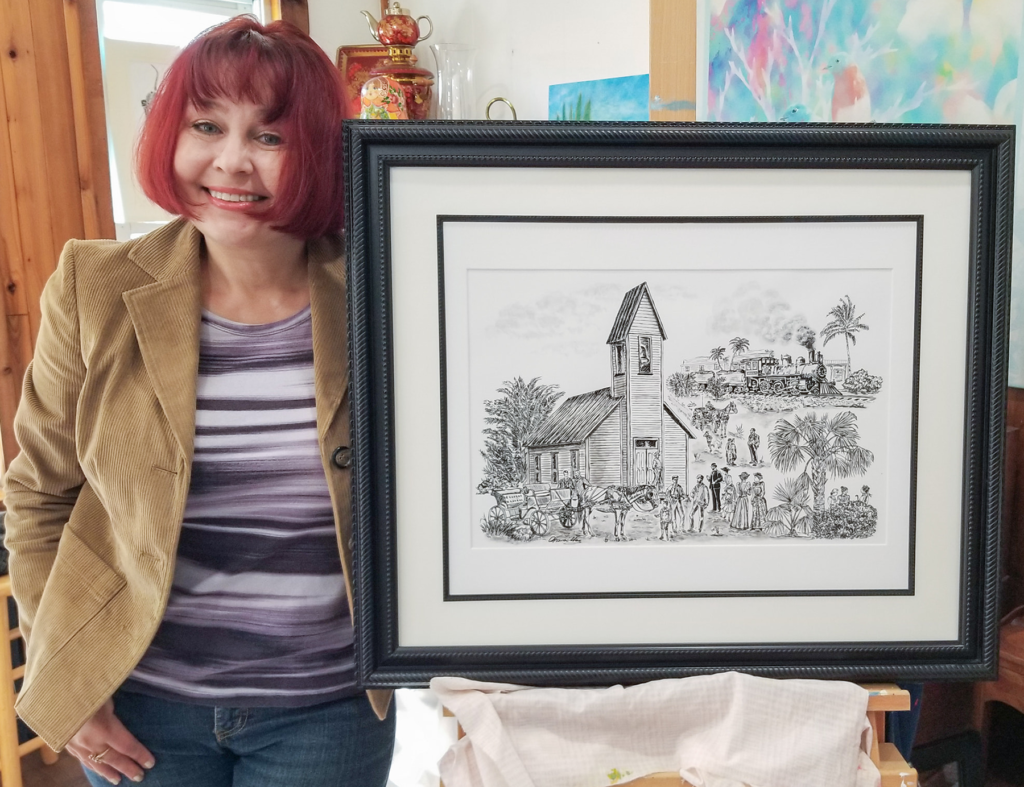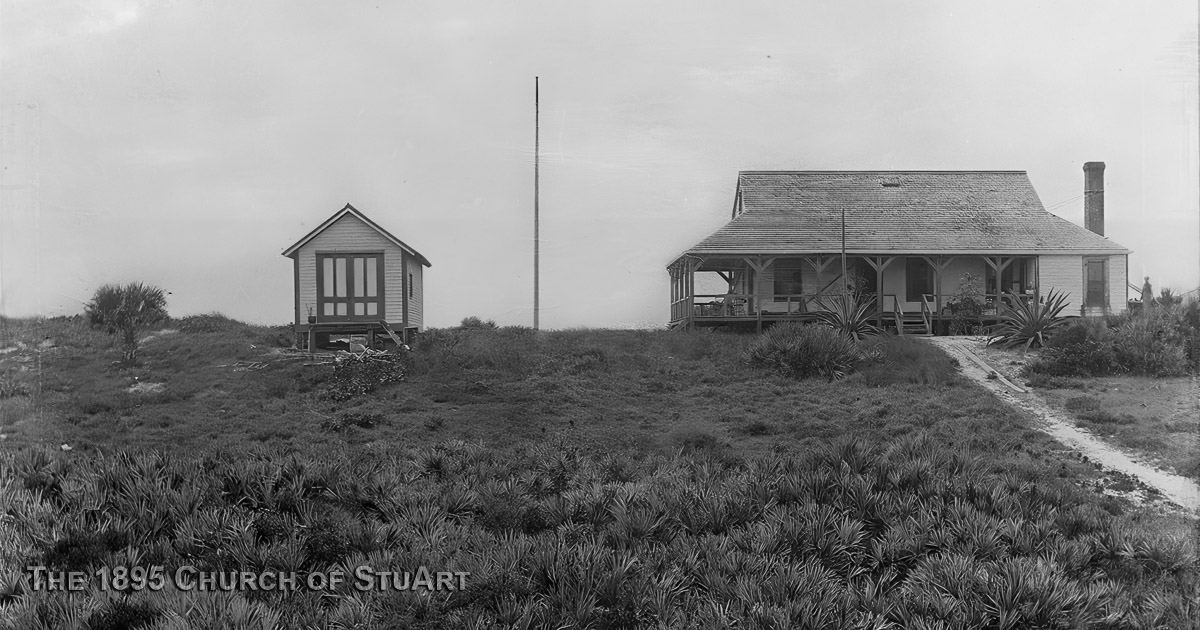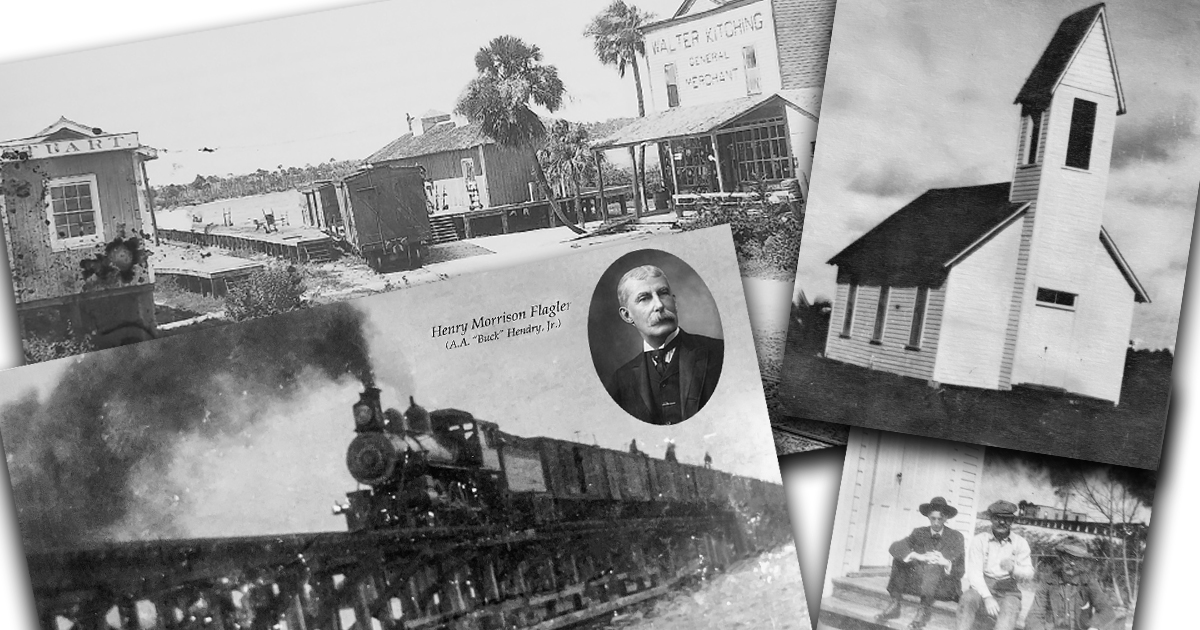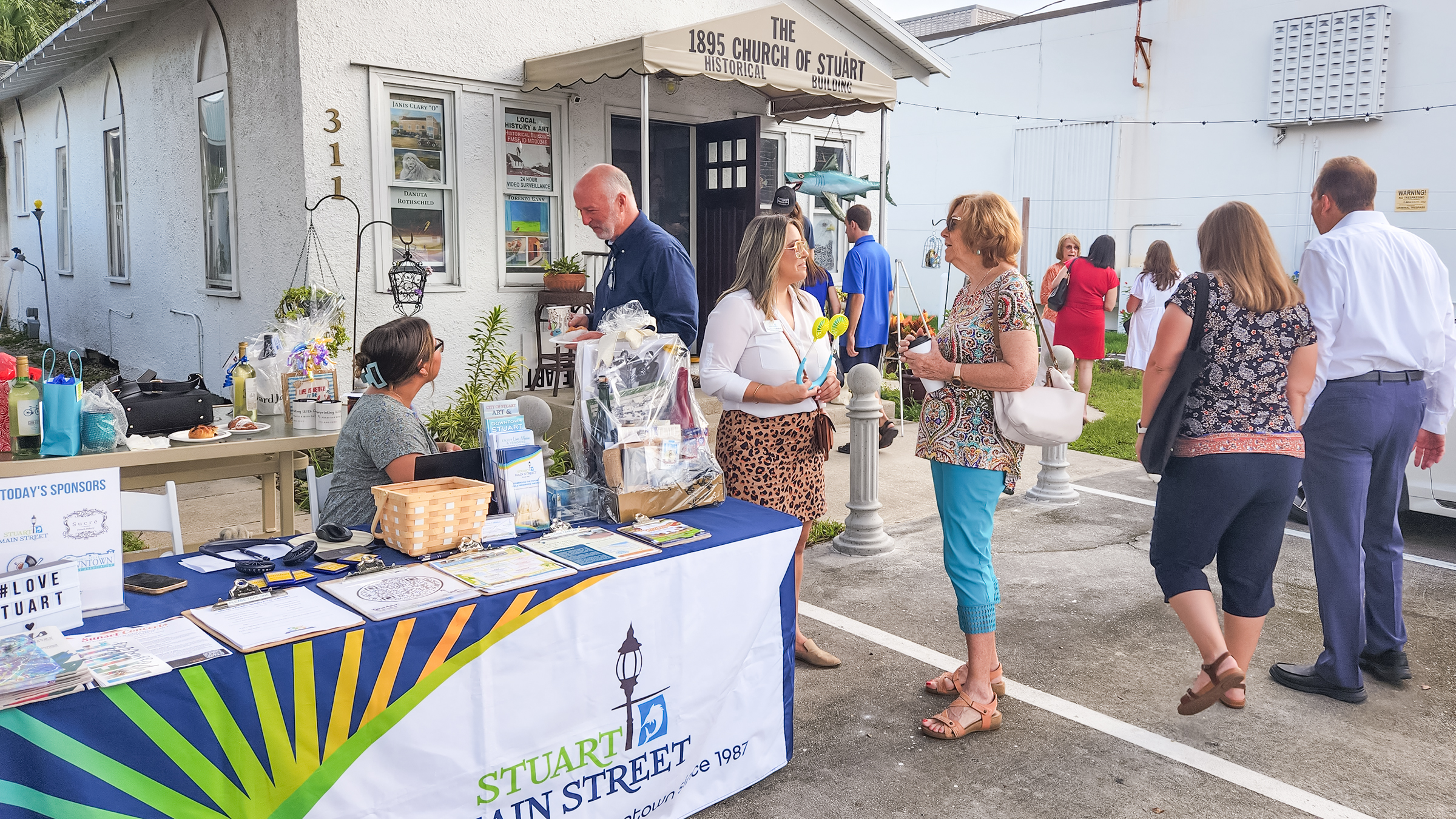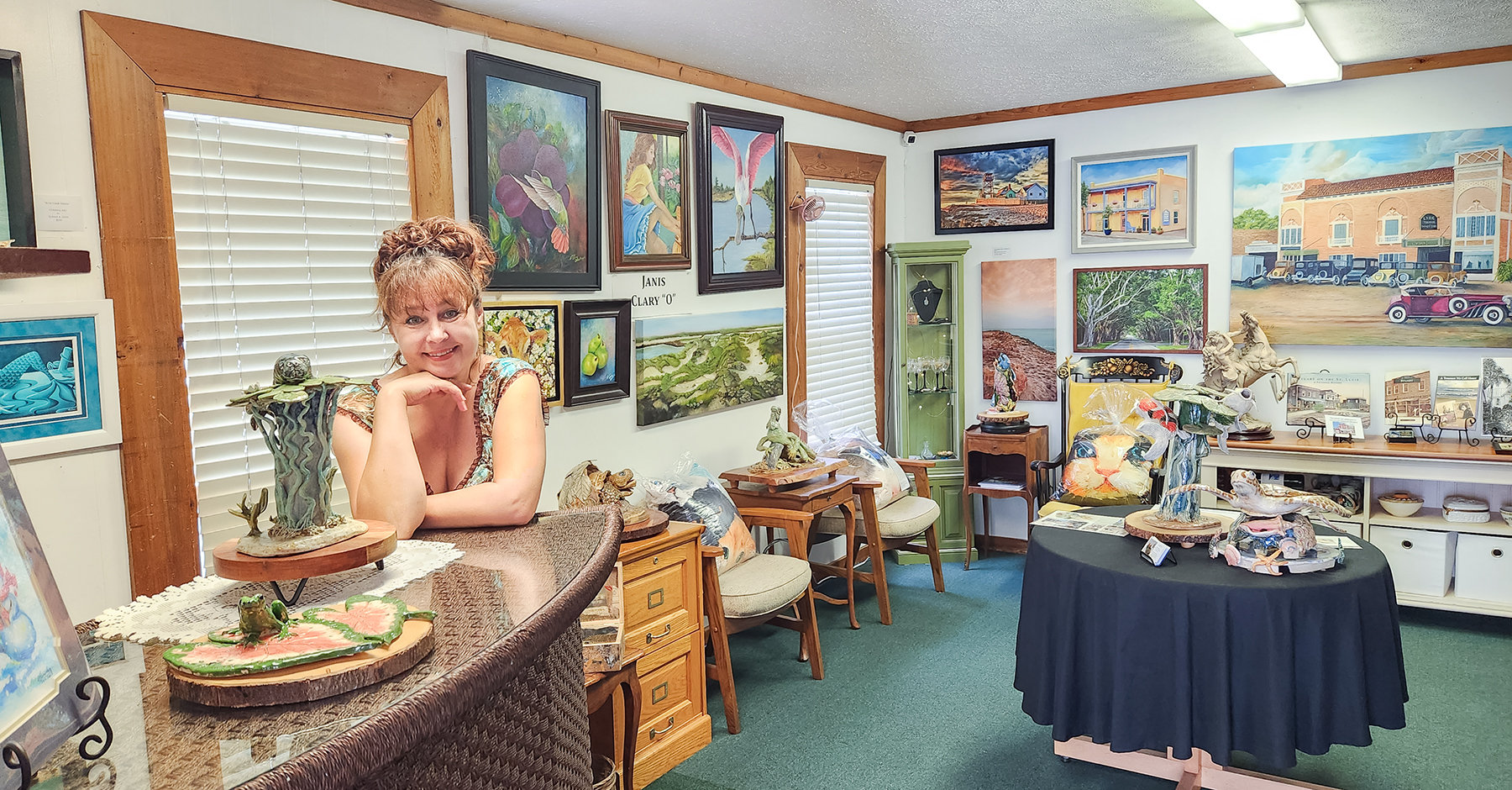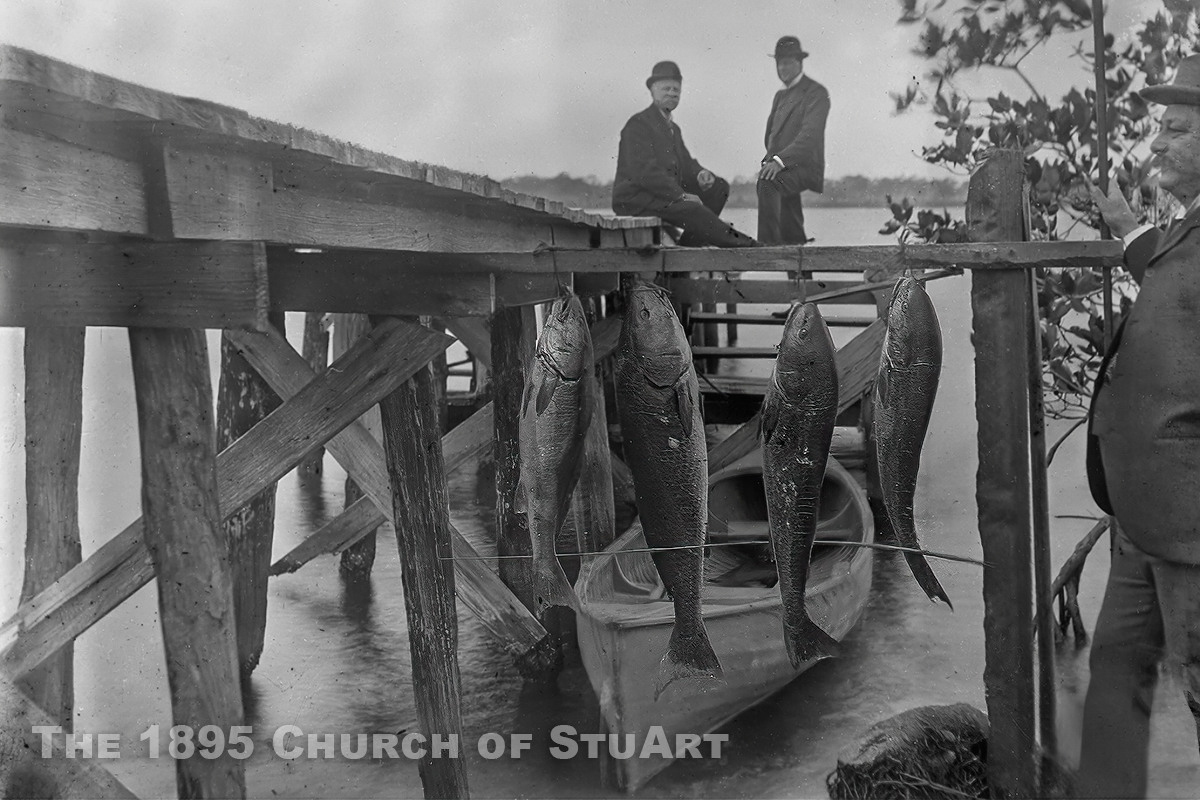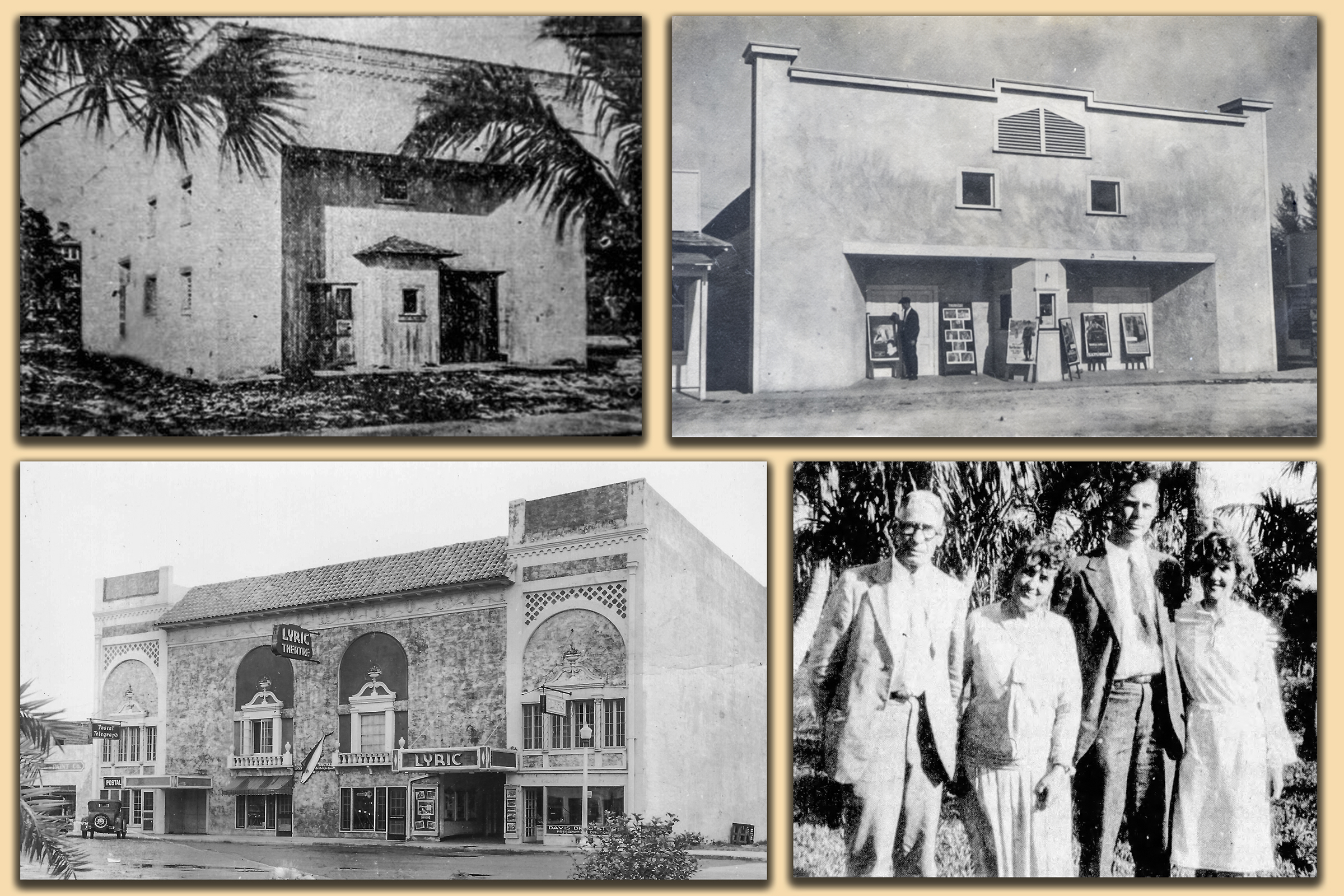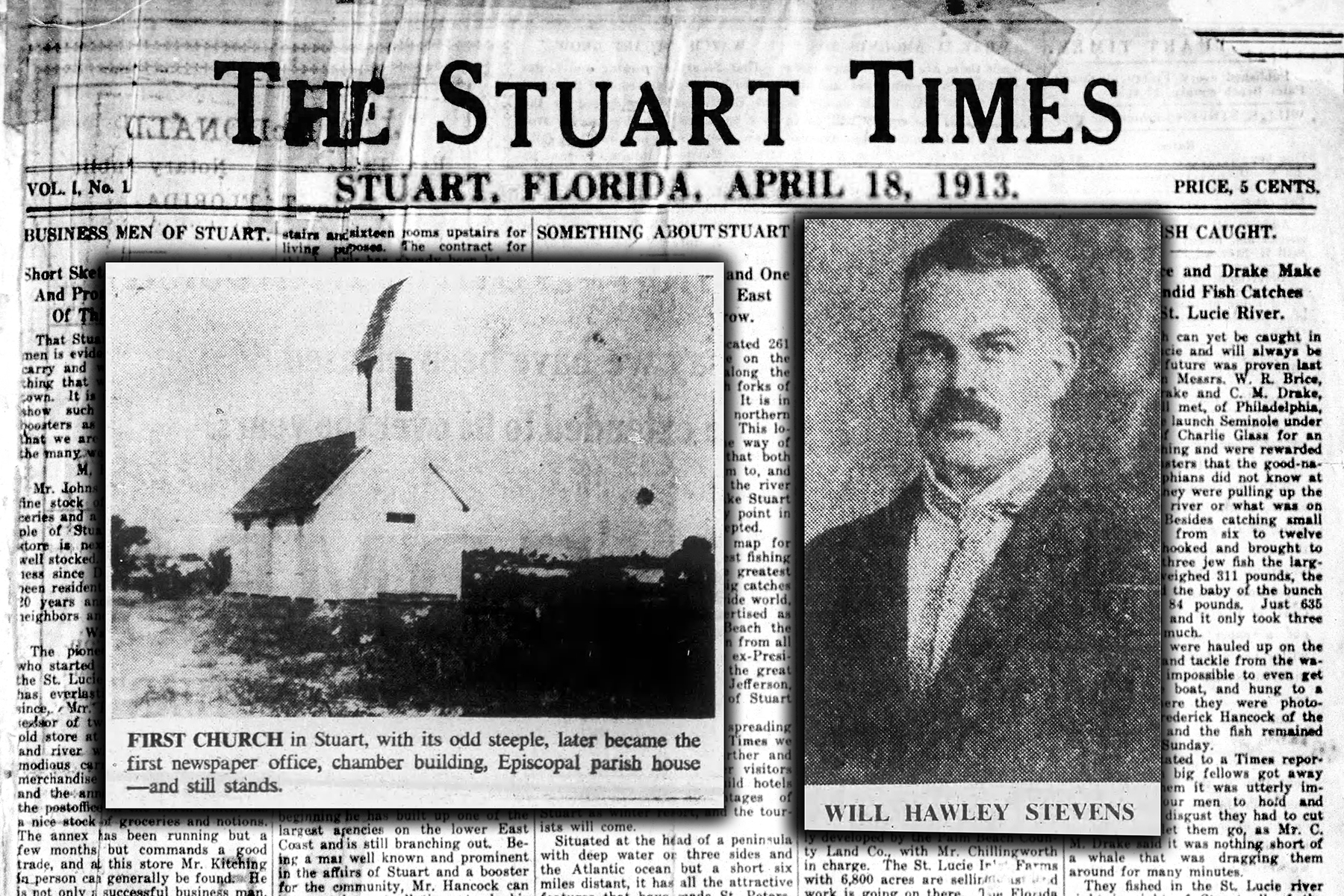by Mrs. John E. Taylor (Sara Josephine Kitching)
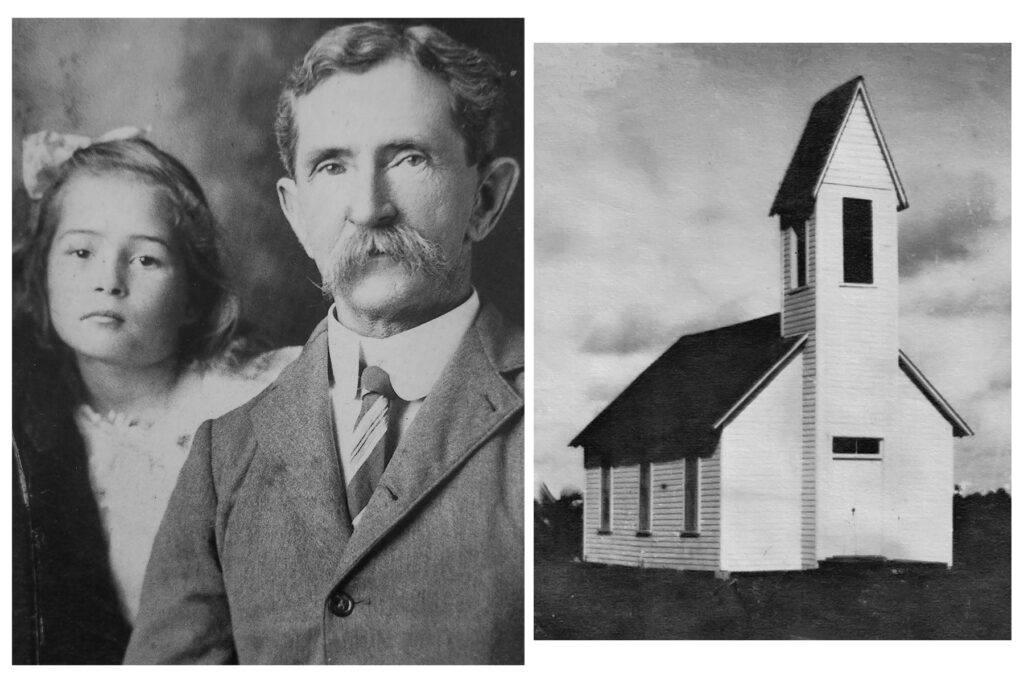
In 1891 Sunday School was held in one of the homes of the settlers. Twenty enrolled under the leadership of Mrs. Brown. She was the aunt of Miss Kate Hamilton, the first school teacher. Sometime later, the Sunday school was held in the school house. During the week neighborhood dances were held in the homes. The volunteer music consisted of piano, violin, and accordion. Some years later, around 1899 and on, the dances, cake walk, etc., were held upstairs in my father’s big General Merchandise store on weekends. This was located down by what is now the Youth Center Park at the end of Flagler Avenue.

The first church services ever held on the shores of the St. Lucie River were held in the School House at Potsdam, Florida, in 1893 by the circuit rider minister, Rev. C. Fred Blackburn. He came by steamboat to Sewall’s Point, and was met there by one of the settlers and rowed across or sailed across the St. Lucie River to the School House. The location of the school House is where the Riverview apartments are now.
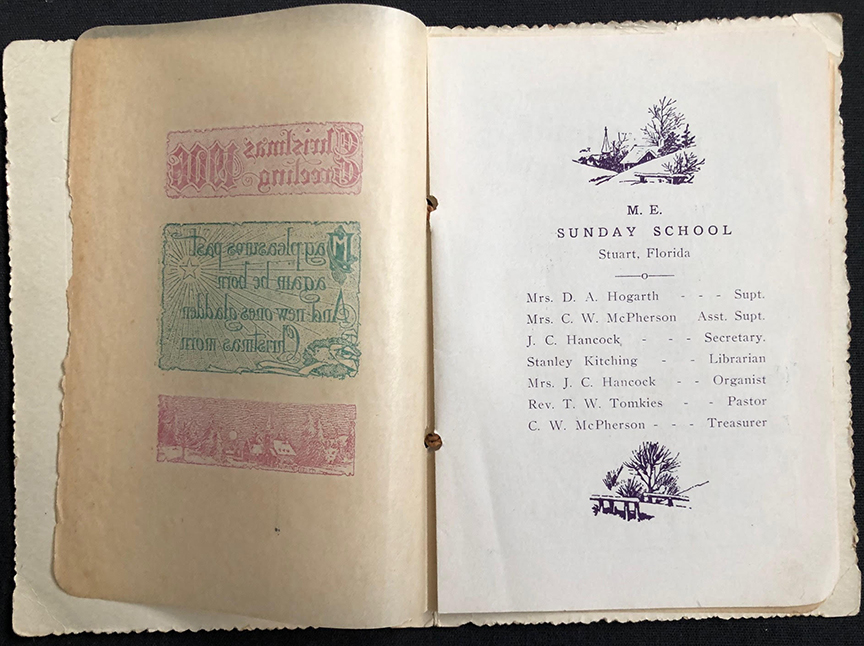
The first church service was really by chance, as Brother Blackburn had been asked to officiate at a wedding. But on arriving for the big event, he found that the couple to be married, Miss. Kate Hamilton and Mr. William J. Dyer, had obtained their marriage license in the wrong county. Consequently, there was no wedding that day. Instead, Rev. Blackburn held church services in the little school house. A few weeks later, he returned and performed the wedding ceremony after everything had been corrected.
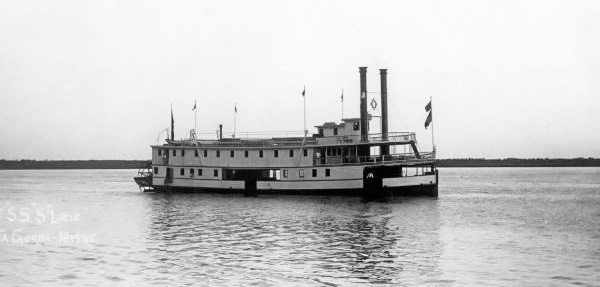
Rev. Blackburn, an ordained minister of the Methodist Episcopal Church South came again to Potsdam, Florida, in 1893 and called upon the settlers. He advised them that he would hold divine services at the pioneer school house once a month. Rev. Blackburn was born, raised and educated in England, and he finished his theological studies there. He preached common sense, educational sermons, and filled his church. He was liked by all the settlers, regardless of denomination or creed. With great sorrow, they saw him leave in the spring of 1894. Rev. Blackburn had fulfilled his mission here establishing a congregation.
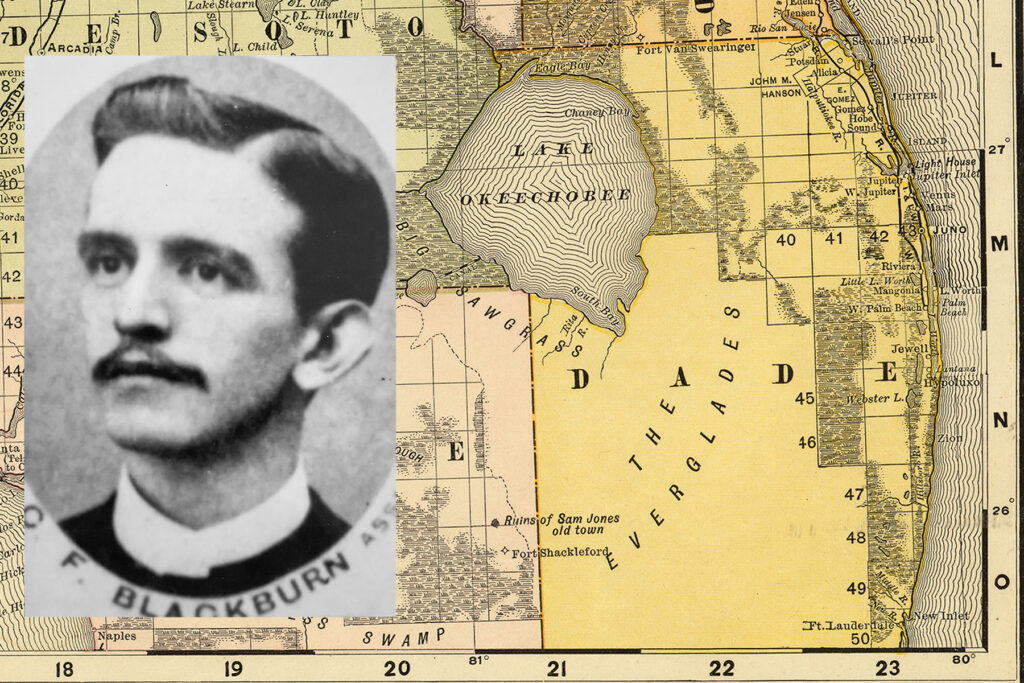
Rev. Blackburn married my parents, Walter Kitching and Emma Jane Michael on February 23, 1894 in Orchid, Florida, on Orchid Isle across from Wabasso. Later, he baptized me, Sara Josephine Kitching.
He (Rev. Blackburn) was followed by Rev. J.A. Hendry who was stationed in West Palm Beach, Florida. Brother Hendry was a “go-getter” and builder, and in his early sermons he impressed upon the congregation the necessity of building a church. He followed this by calls on the settlers to subscribe money or labor for this undertaking.
By February, 1895, the building of the church was assured. Material was ordered from Titusville, Florida. My mother and father, Walter and Emma Kitching, were on their Tradeboat Schooner, the Merchant, when they received a message asking them if they would give a lot for a Methodist Church. They sent word back that they would do so gladly. This deed for the lot was written up by Secretary of the Church Broster Kitching and Trustee Robert McPherson. The lot deed was recorded and signed September 19, 1894, by my parents, Walter and Emma Kitching. Someone later asked my father why he gave the lot so close to the railroad and he answered that he wanted everyone to know of that we had a church. The location given is now in the middle U.S.1, just after you cross the Roosevelt Bridge going south. In September of 1894, Rev. C. W. White was sent to the Indian River Mission, Potsdam, Florida. He organized the small group into a Methodist Church and on April 1st, 1895, the church building was started. By the end of May, it was finished – just two month time. Brother Blackburn the Presiding Elder, and Brother J. A. Hendry came and dedicated the first Methodist Episcopal Church South to God in June 1895. At this first service, Rev. C.W. White was the pastor.
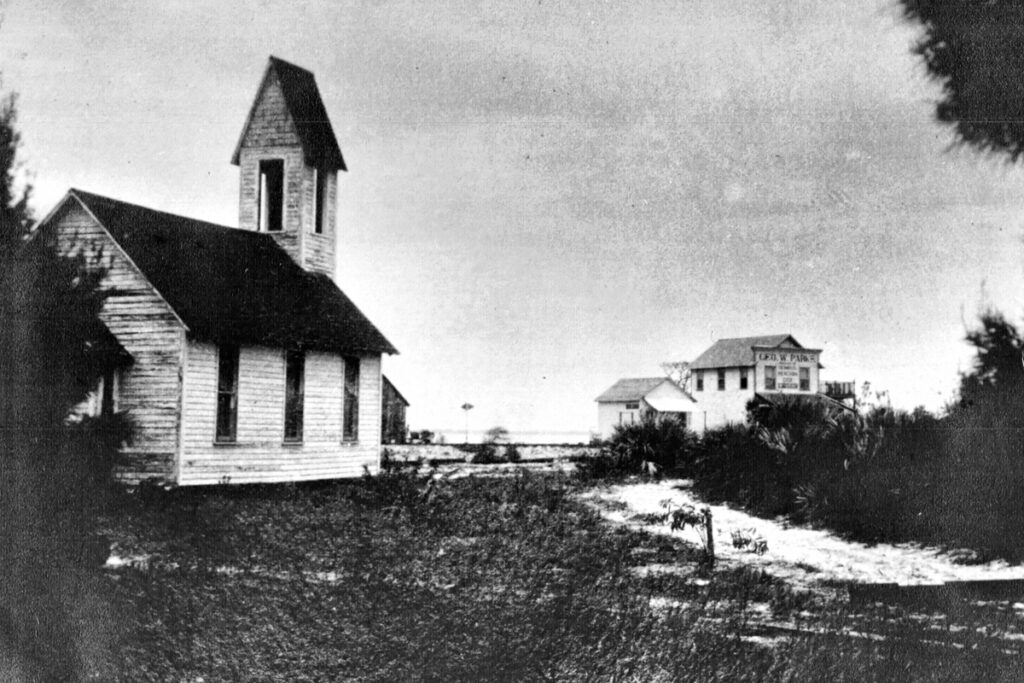

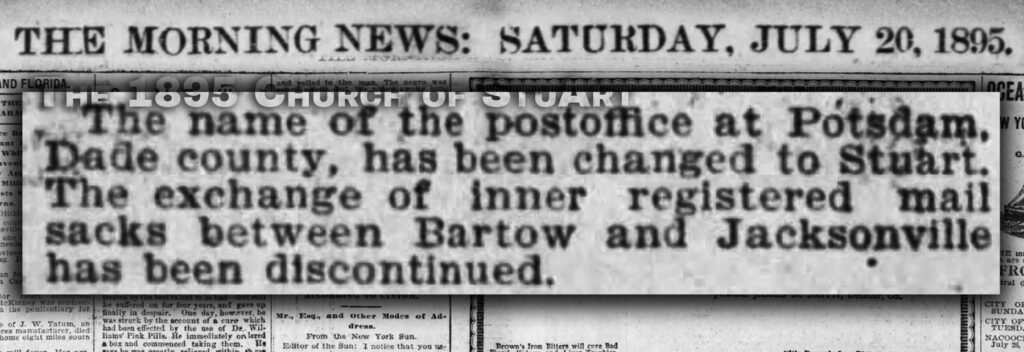
This little painted white church and red roof with a tall steeple attracted people from miles around. It was the church for the whole community whatever their denomination, as it was the only church here. Everyone in Potsdam (Stuart in July, 1895) attended this church. Four charter members in June 1895 of the Methodist Episcopal Church South of Stuart, Florida were: Mr. and Mrs. J.E. Fultz
Mrs. Robert McPherson, Sr.
Mr. Charles Guller
Mr. Broster Kitching
Later in 1895 two more joined:
Jr. J.H. Padgett
Mrs. William J. Dyer
Others who joined later were:
Mrs. Walter (Emma) Kitching – June 27th, 1897
Mr. and Mrs. Charles (Belle) McPherson – June, 1898
Mr. and Mrs. Homer Witham – September, 1898
Mr. Walter Kitching – June, 1903
The settlers were happy together, like one family. They were neighbors and brothers, sharing in the joys and sorrows that came alike to all. At Christmas time the community Christmas tree and the entertainment were in the church. Each child had a piece to speak and share in the tree and the treats. The cost of all this was no more than $5.00. The toys were often broken up before the children reached home, but they had had their Christmas. Old Santa had remembered them and they were happy. Some went home by boats down the St. Lucie River as we had no paved roads, just foot paths and wagon paths. The river was our highway.
I remember one Christmas as a little girl in this first Methodist Episcopal Church South. My father, Walter Kitching, was Santa Claus and he came up and shook hands with me. After returning home, I remarked to my father, “Father, Santa ‘Claus had hands just like yours.” I can see his hands now it impressed me so.
Mrs. Charles McPherson was our first pianist. She had promised her husband that she would move to Florida with him from Nebraska if he would promise to tell no one that she could play piano. On their first Sunday in town they attended the church. The regular pianist was sick that day and the minister asked if there was anyone who could set the pitch for the congregation. Charles McPherson nudged his wife (apparently forgetting his promise) and Belle served for the next fourteen years as church pianist. She was an accomplished musician and a good choir leader. After her, Fern McPherson, her daughter became the pianist. Mrs. J. C. Hancock was another early church pianist. By far, the longest serving church musician was Edna Witham Coutant. She served for over thirty years with little or no salary. It was in the early 1940s that the congregation raised the money to purchase a pipe organ. Mrs. Coutant attended summer school at Florida State University in 1942 in order to sharpen her teaching skills and take organ lessons. She was 50 years old at that time and she continued to serve our church and later another Methodist church for many, many years.
Funerals were held in the church or homes of the family. The settlers made the caskets and the women lined them. The women also helped line an open the grave with greens, ferns, etc., to help soften the look of the white bare sand. The casket with flowers from the garden of their friends was out on an open boat. The funeral procession then went down the river in boats and up Poppleton Creek to the little bridge near the cemetery. From there, the casket was carried to Fern Hill by an ox or horse drawn wagon for the coffin. The mourners and friends could walk the short distance to the cemetery. Fern Hill Cemetery was started in 1906. Before that, the deceased were buried by their homes.
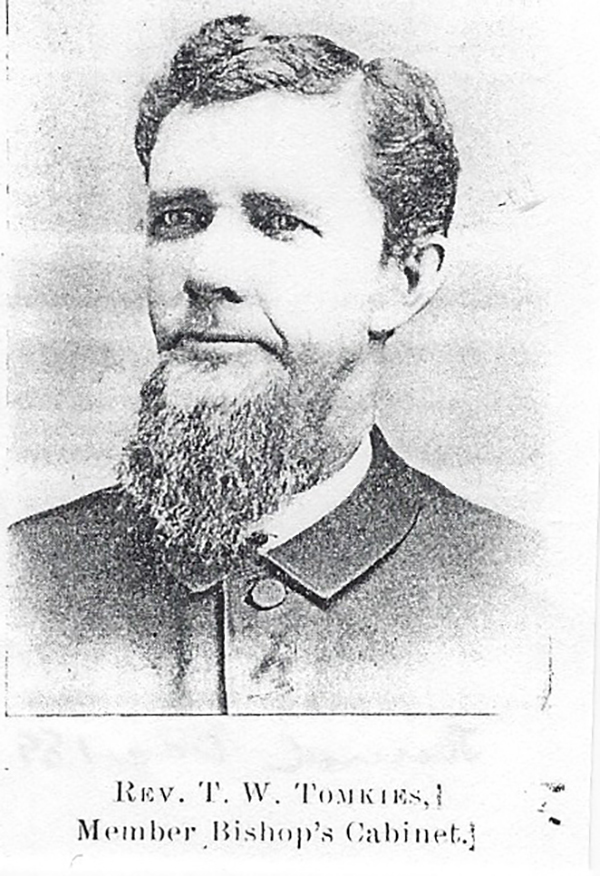
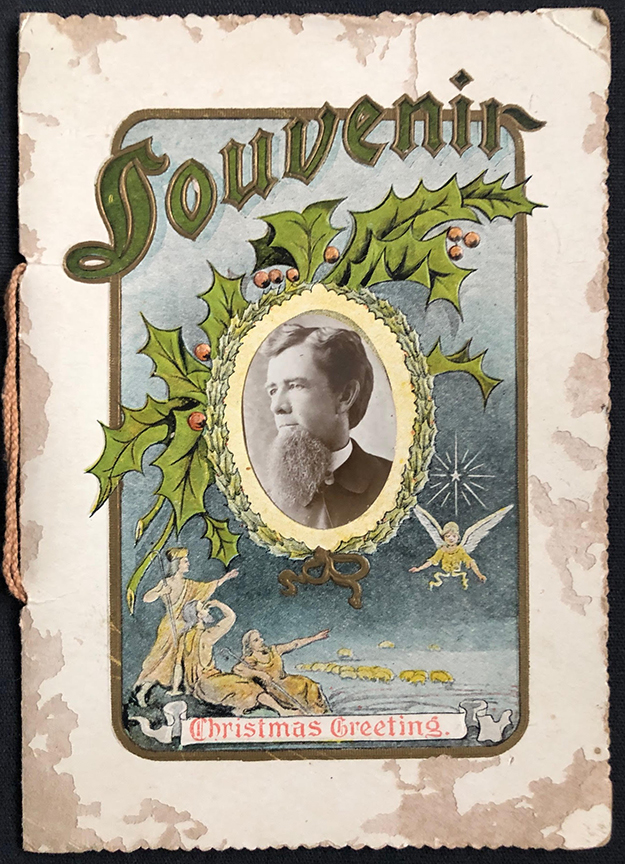
Before the Methodist Epworth League was organized in October, 1906, the community had an organization called the Christian Endeavor Society. This was begun by our preacher, Re. Thomas Tomkies in June, 1906, and it met on Sunday evenings. All the Christian people of town attended this service. The Christian Endeavor Society was held for some years until the other churches organized their own services.
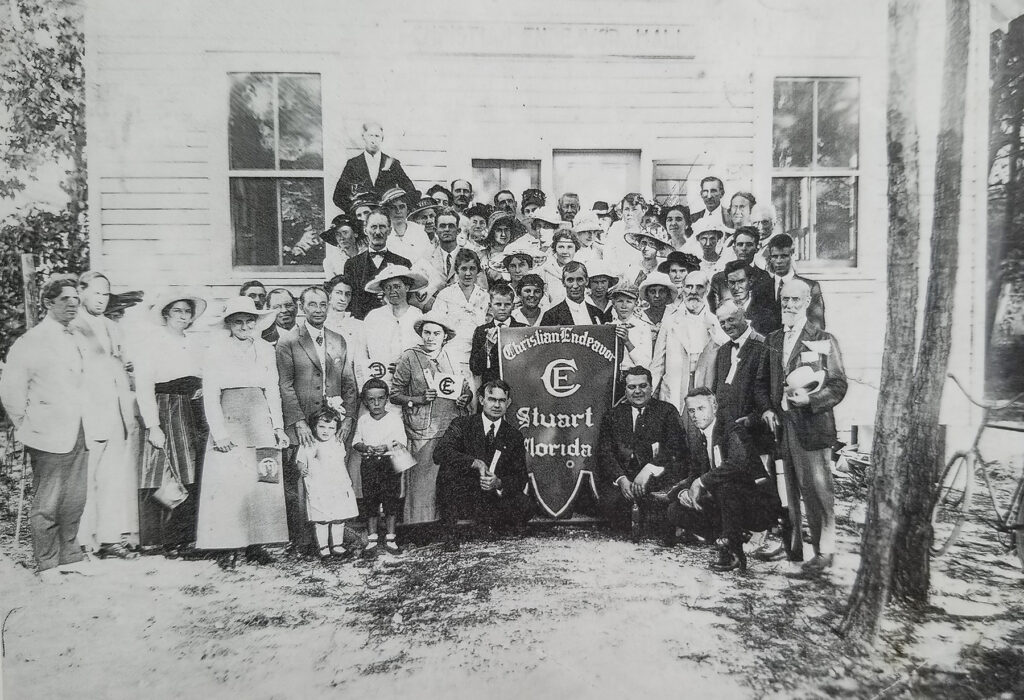
In 1907, the little Methodist Church was outgrown and a new second Methodist Church was started. The lot for this second church was given by Mr. Robert McPherson, Sr. on Second Street and Albany Ave. in Stuart. It was dedicated in March, 1908 by the Presiding Elder Rev. F.W. Loy. This was a very pretty concrete block church. It had stained glass windows and a short steeple with a bell. Pineapple prices in 1907 were good and the growers contributed freely.

Later, in 1909, the Epworth League Hall was built behind this church, facing West 2nd Street. This was where the church members had their Ice Cream Socials to raise money for the church. They charged 10 cents a dish. In those days of no Drug Stores or Ice Cream Parlors, the ladies made the custard to be frozen in a hand-turned ice cream freezer. The men and boys had the pleasure of turning the crank and cracking the ice. The coarse salt used with the ice to help freeze the ice cream was put to good use afterwards. My father, Walter Kitching, would put the ice cream salt that was left over around our coconut trees. The liked it and seemed to thrive. The Ice Cream Socials were fun for all, with everyone in the community turning out to enjoy the treat as well as the social part of contact with friends. This was also one way that the Ladies Aid Society of the church had in raising money, along with suppers, musical entertainments and plays.
On New Year’s Day, 1916, most of the residents of Stuart had gone across the river to Palm City for a picnic. In those days there was no bridge and they had come in boats. A fire started in an apartment two doors away from our church and spread to the entire block. We stood helplessly watching across the river as the fire took a large part of our town, including our beautiful new church. Some of the records were saved but much was lost. We then held our church services in the Woodman Hall until our third church was built. By December 1916, we moved into the downstairs of our new church and in the early part of 1917 the upstairs was finished. This building was dedicated in March, 1917. Three new Sunday School rooms in the rear of this third church were built in 1925. Also, at that time, an outside stairway was added. In 1948 a row of new Sunday School rooms were built behind the church.
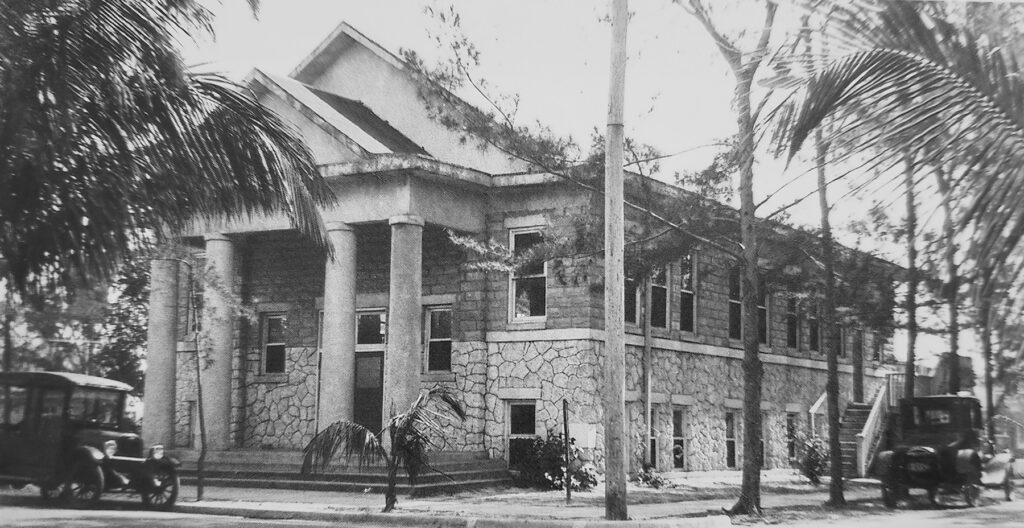
The first Methodist parsonage was built on West 2nd Street in the Kitching Addition in 1913. The lot was donated by my parents, Walter and Emma Kitching. In 1951 this parsonage was sold and a new one was built behind the 3rd Methodist Church on the corner of West 3rd Street and Albany Avenue. In January, 1961 this parsonage was sold and we bought a 3rd parsonage in pine Manor Subdivision, next to our 4th church.
After we sold our first little Methodist church with the red roof, the steeple was removed and it was used as a residence. Later it became a cleaning shop, real estate office and chamber of Commerce. In 1931 the Episcopalians bought the little church and moved it to the corner of West 3rd street and Albany Avenue. It was enlarged both back and front and used as a church for almost twenty years. In 1951 the Methodist bought this property including the little church, and it was back home again with its’ original owners. At this same time it was moved over several feet to the south east to make room for our parsonage. The first church was then used as our Methodist Youth center. All this property was sold in January of 1961.
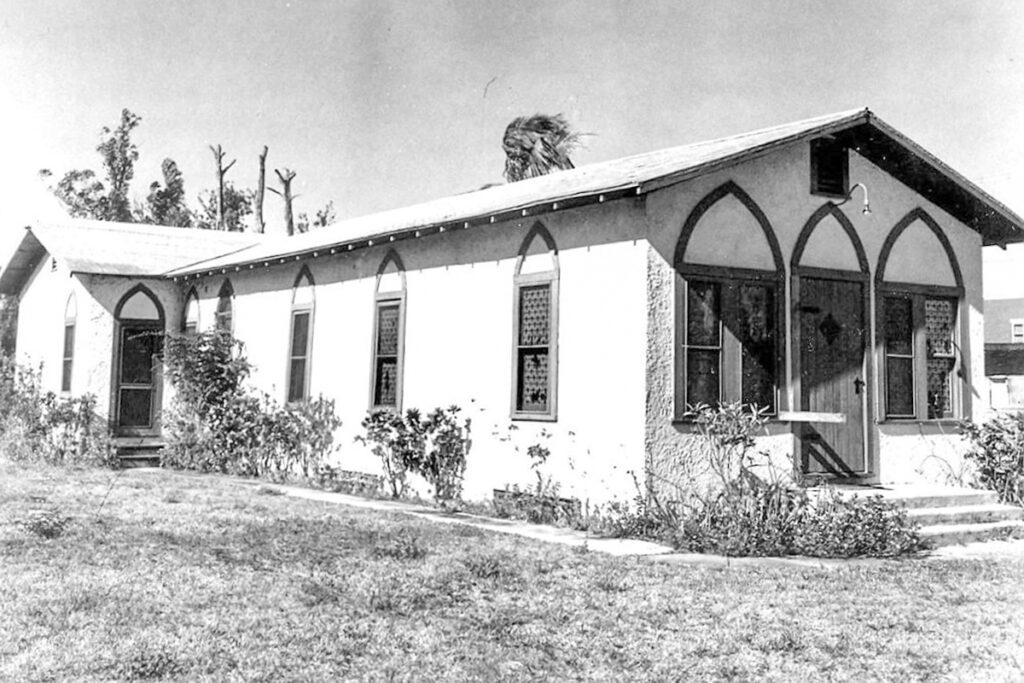
In 1955 and 1956 the Methodist bought 4 acres of land on Route 76 adjoining Pine Manor S/D. In November 1957 Rev. W. Goddard Sherman with General Chairman C.O. Rainey and the Committee made plans and started the fund raising drive for a new church plant. November 21, 1957, a dinner was held at the Edenlawn Plantation to celebrate a six day fund raising campaign. A total of $87,920 was raised with pledges. On October 5th, 1958, Boyne McPherson, a member of this church for 51 years (son of Robert McPherson who gave the lot for the 2nd church) turned the first shovel of ground for the new building. This sanctuary later became known as the Fellowship Hall. On May 24, 1959, the last services were held in our 3rd church on 2nd street and the corner of-Albany Avenue. On Sunday, May 31st, 1959 the first services were held in the new church. By June of 1962 we had bought 2 or 3 more acres of land in the rear of the new church on Indiantown Road. We moved our pipe organ from the old church to the new building in 1965.
On March 24, 1968, the groundbreaking for our new Methodist Church Sanctuary was held. I (Mrs. John E. Taylor) was honored to shovel the first shovel of sand. On February 16, 1969, I again had the honor to assist Rev. Allen Stuart along with my husband, John E. Taylor, in laying 3 bricks from the first church of 1895 in the steps of our new sanctuary. The first services in our new sanctuary were held on February 23, 1969 in the First United Methodist Church, Stuart. On December 7, 1969, Bishop Rev. Dr. James Henley gave consecration services of our new Sanctuary. It seats 750 people and has a value in excess of $350,000. Rev. Allen Stuart and his wife Ann gave the corner stone.


The 1895 Church of StuArt is a historical building of the first community church, also known as the Pioneer Church (the oldest church building in Martin County), built in Stuart in 1895! Your donations help us maintain, restore, and preserve the building, and also continue our research and share historical information and articles. We greatly appreciate your support! The donations are not tax deductible.
Visit our historical building of the first community church built in Stuart in 1896, the oldest church building in Martin County, Florida. Enjoy the building’s history tour and fine art by our local artists: 311 SW 3rd St., Stuart, Florida 34994

Jo Marie Paradise and Judy Clark, granddaughters of the Taylors (John E. Taylor and Sarah Josephine Kitching), present a brick from the original foundation of the historic church

Olga Hamilton and her classic ink and pen drawing “Gathering At The First Community Church.” The original drawing and limited edition prints are available for sale to benefit the building’s restoration and maintenance. Please follow The 1895 Church of StuArt on Facebook for updates https://www.facebook.com/The1895ChurchOfStuArt
